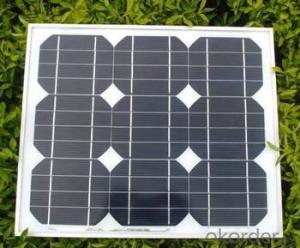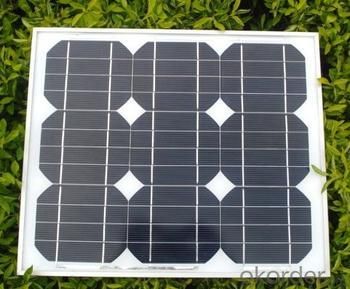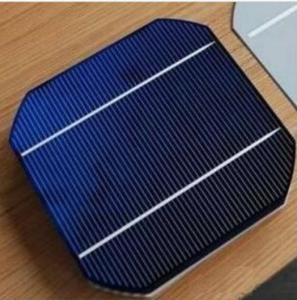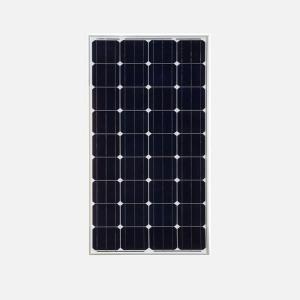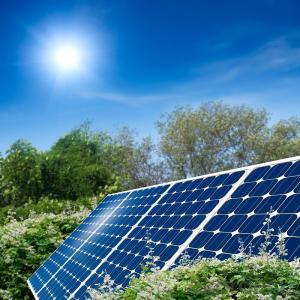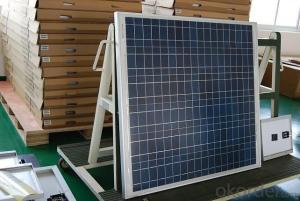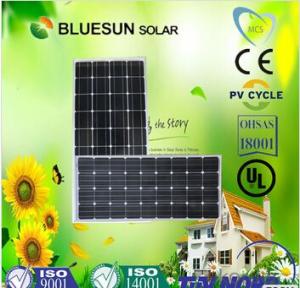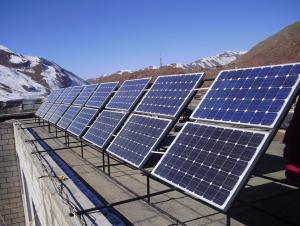Rooftop Solar Cells PB Free Aluminum Paste for Monocrystalline Silicon
- Loading Port:
- China Main Port
- Payment Terms:
- TT OR LC
- Min Order Qty:
- -
- Supply Capability:
- -
OKorder Service Pledge
OKorder Financial Service
You Might Also Like
Quick Details
| Model Number: |
Packaging & Delivery
| Packaging Detail: | 25kg/drum |
| Delivery Detail: | 5 days after payment arrived |
Specifications
AL8866 is a series of aluminum pastes developed for use as the back electrode on single or polycrystalline silicon solar cells.
Technical Data Sheet
Product description
AL8866 is a series of aluminum pastes developed for use as the back electrode on single or polycrystalline silicon solar cells. This low bow aluminum paste is specially designed to form p+ doped layer when fired on a p-doped silicon (<200 microns) photovoltaic devices. This paste has been optimized to eliminate Al bead formation during the firing process.
Typical properties | |
Solids (%) | ≥ 75% |
Viscosity (Pa.s) (NDJ-79, 25) | 23-35 |
Emulsion thickness | ≤ 25μm |
Screen mesh | 200-280 |
Dried thickness | 35±5μm |
Fired thickness | 25±5μm |
Resistivity (milliohms/square) | ≤ 30 |
Bowing | 125×125mm Monocrystalline silicon≤ 1mm (200 micron wafer) 125×125mm Monocrystalline silicon 1±0.25mm (180 micron wafer) |
All properties are target values and are not meant to represent product specifications.
- Q: How much maintenance do solar cells require?
- Solar cells require very little maintenance. They are designed to be durable and can typically last for decades with minimal upkeep. Routine maintenance may involve occasional cleaning to remove dust or debris that could affect their performance. Additionally, regular monitoring of the system's performance and checking for any potential issues is recommended. However, overall, solar cells are known for their low maintenance requirements, making them a reliable and cost-effective renewable energy solution.
- Q: Can solar cells be used in disaster relief or emergency response situations?
- Yes, solar cells can be used in disaster relief or emergency response situations. They provide a reliable and sustainable source of power, especially in areas where the traditional electricity grid may be damaged or inaccessible. Solar cells can be used to generate electricity to power essential equipment, communication systems, and medical devices, ensuring effective response and aid delivery in emergency situations. Additionally, their portability and quick installation make them ideal for rapid deployment and temporary power supply in disaster-stricken areas.
- Q: How big are solar cells?
- Solar cells vary in size depending on their application. They can range from small cells measuring a few centimeters in width and length, commonly used in portable electronics, to larger panels that can be several meters in width and length, used in residential or commercial installations.
- Q: Can solar cells be used on satellites?
- Yes, solar cells can be used on satellites. In fact, they are commonly used to power satellites in space by converting sunlight into electricity.
- Q: What is the impact of shading on solar cell performance?
- The impact of shading on solar cell performance is significant as even a small amount of shading can significantly reduce the overall efficiency and output of the solar cell. Shading can create "hot spots" on the cell, leading to increased resistance and decreased current flow. This can result in a loss of power generation and reduced performance. Therefore, it is crucial to minimize shading and ensure unobstructed sunlight exposure to maximize the performance and efficiency of solar cells.
- Q: What is the impact of solar cell installations on local economies?
- The impact of solar cell installations on local economies is generally positive. These installations create jobs, both in the manufacturing and installation sectors. They also attract investments and stimulate economic growth by reducing energy costs for businesses and households. Additionally, solar installations contribute to reducing greenhouse gas emissions, improving air quality, and promoting sustainable development in the long run.
- Q: How do solar cells affect property value?
- Solar cells can positively affect property value by reducing energy costs, increasing energy efficiency, and providing a sustainable and environmentally friendly energy source. Additionally, solar panels can be seen as a desirable feature by potential buyers, leading to increased demand and higher property values.
- Q: How do solar cells perform in areas with high humidity and saltwater exposure?
- Solar cells generally perform well in areas with high humidity and saltwater exposure. However, prolonged exposure to high humidity and saltwater can potentially degrade the performance and lifespan of solar cells. The humidity can cause moisture to accumulate on the surface of the solar panels, leading to reduced efficiency. Additionally, saltwater exposure can corrode the metal components of the solar cells, further impacting their performance. To mitigate these issues, manufacturers often use corrosion-resistant materials and coatings for solar panels deployed in coastal regions or areas with high humidity. Regular maintenance and cleaning can also help ensure optimal performance in such environments.
- Q: Can solar cells be used for powering electronics?
- Yes, solar cells can be used to power electronics. Solar cells convert sunlight into electricity, which can be used to power a wide range of electronic devices, from small gadgets like smartphones and calculators to larger appliances like laptops and even homes.
- Q: Can solar cells be used in hot climates?
- Yes, solar cells can definitely be used in hot climates. In fact, solar panels tend to function more efficiently in hot weather as higher temperatures increase the conductivity of the cells, enhancing their overall performance. However, it is important to note that excessive heat may also decrease the lifespan of solar panels over time. Therefore, proper design considerations and cooling mechanisms are often employed to ensure optimal performance and longevity in hot climate installations.
Send your message to us
Rooftop Solar Cells PB Free Aluminum Paste for Monocrystalline Silicon
- Loading Port:
- China Main Port
- Payment Terms:
- TT OR LC
- Min Order Qty:
- -
- Supply Capability:
- -
OKorder Service Pledge
OKorder Financial Service
Similar products
Hot products
Hot Searches
Related keywords
